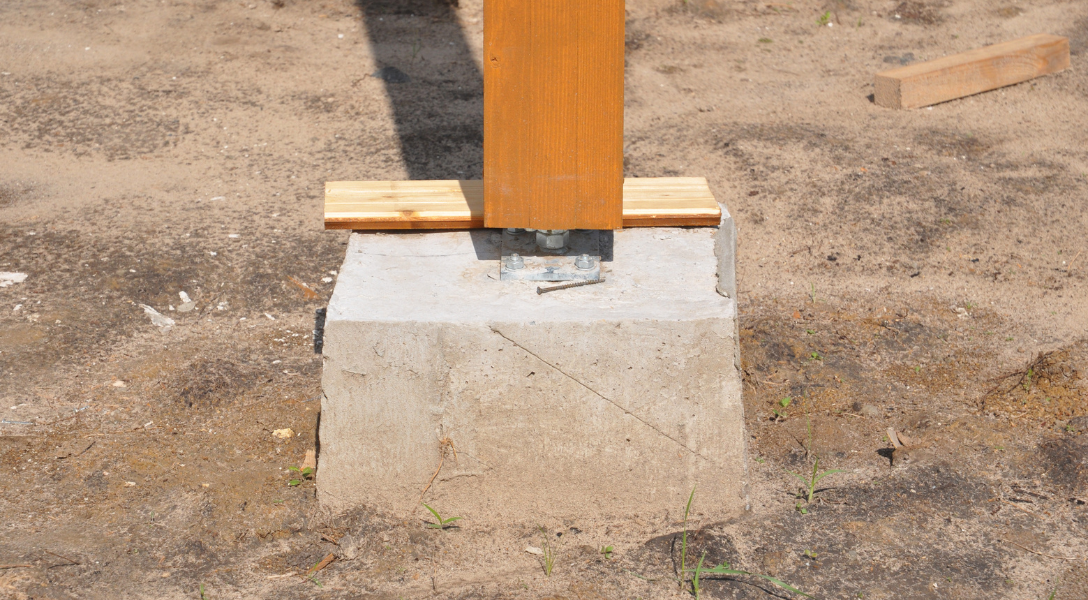Step Up Your Deck Game: Everything You Need to Learn About Deck Footings
Essential Tips for Solid Deck Ground: A Comprehensive Overview
Building a deck is a financial investment that requires cautious preparation and interest to information, particularly when it comes to the ground. This guide will certainly cover vital facets such as selecting the ideal materials, examining dirt conditions, determining lots capacity, figuring out proper footing depth, and achieving exact installment. Allow's dive into the world of strong deck ground and establish a foundation you can count on.
Picking the Right Deck Footing Products
When picking the right deck footing products, it is important to take into consideration the specific needs and demands of your task. The quality and toughness of the footings straight impact the security and long life of the deck structure. There are a number of factors to think about when choosing deck footing products.
One important consideration is the sort of dirt in your area. Various dirt types have differing load-bearing abilities and drainage properties. As an example, clay dirts often tend to retain water, while sandy dirts drain swiftly. Understanding your soil problems will certainly assist you select footings that can successfully sustain the weight of the deck and protect against concerns such as sinking or heaving.
Another element to think about is the climate in your region. Extreme temperatures, dampness degrees, and freeze-thaw cycles can impact the performance of deck footings. In cool environments, for circumstances, frost heave can cause footings to shift or break. In such instances, utilizing frost-resistant materials or mounting footings below the frost line can aid alleviate these threats.
Furthermore, the size and layout of your deck must likewise affect your option of footing materials. Larger or even more complicated decks may call for deeper or reinforced footings to guarantee appropriate support. Comprehending the specific tons needs of your deck will assist you figure out the proper materials to utilize.
Inevitably, selecting the best deck ground products involves careful factor to consider of variables such as soil conditions, environment, and deck layout. By taking these factors into account, you can select grounds that provide the required support, boost the security of your deck, and guarantee its longevity.
Appropriately Analyzing Soil Conditions
To correctly examine dirt problems for your deck ground, it is essential to completely examine the load-bearing abilities and water drainage residential properties of the dirt in your location. Recognizing the dirt's capacity to birth weight and its capacity to drain pipes excess water will help guarantee the stability and longevity of your deck.
When evaluating the load-bearing capability of the soil, it is very important to think about aspects such as dirt compaction, kind, and thickness. Different soil kinds have differing load-bearing abilities, with compressed soils typically providing better support than sandy or loosened dirts. Carrying out a soil test can give beneficial details regarding the soil's ability to sustain the weight of your deck.
Furthermore, examining the drain homes of the soil is vital to prevent water buildup and prospective damage to your deck - Deck Footings. Poor drainage can bring about moisture accumulation, which can compromise the foundation and create architectural problems. It is necessary to analyze the soil's ability to drain pipes water efficiently to avoid these troubles
Consulting with an expert engineer or dirt expert can greatly aid in appropriately evaluating dirt conditions for your deck ground. They can offer expert suggestions and assistance, ensuring that you choose the appropriate footing design and products based on the certain characteristics of the dirt in your area. Putting in the time to completely assess soil problems will assist you build a long lasting and strong deck.
Determining Tons Capacity for Footings
One critical action in ensuring the stability of your deck is to properly compute the load capability for your grounds. Deck Footings. The load capability describes the maximum amount of weight or load that the grounds can securely sustain without causing any type of architectural damages or failing. Calculating the tons ability for grounds involves thinking about numerous variables such as the size and type of footings, the type of dirt, the measurements and weight of the deck, and the live tons and dead tons that the deck will certainly undergo
To calculate the load capability, it is necessary to speak with regional building ordinance and policies as they supply details standards and requirements for deck construction. These codes take into consideration variables such as soil bearing capacity, frost depth, and minimum footing measurements. In addition, it is important to engage the solutions of an architectural engineer or an expert specialist that can execute the essential websites calculations and assessments to make sure the safety and security and security of the deck.
When determining the tons capacity, it is necessary to precisely figure out the online load and dead load that the deck will certainly experience. The online tons refers to the weight of individuals, furnishings, and any type of other items that will be positioned on the deck, while the dead tons refers to the weight of the deck itself. By precisely identifying these loads and considering all pertinent aspects, you can make sure that your footings are effectively created to support the weight and keep the security of your deck.
Guaranteeing Proper Ground Depth
Proper ground deepness is essential for ensuring the security and durability of your deck. The deepness at which the grounds are set up directly influences the structural integrity of the deck, as it establishes exactly how well the footings can stand up to the forces applied by the deck and the dirt beneath it.
When establishing the proper footing depth, several aspects should be considered. These consist of the kind of soil, the regional environment, and the tons capacity required for the deck. Generally, grounds must be placed listed below the frost line to stop any heaving or changing due to freezing and thawing cycles. In locations with extensive clay soil, much deeper footings may be necessary to offer ample support.
To identify the appropriate ground deepness, it is recommended to seek advice from a structural engineer or structure examiner that can analyze the specific conditions of your site and supply support based upon local building regulations and regulations. They will think about aspects such as dirt make-up, aquifer degree, and anticipated lots to determine the minimum required footing depth.
Mounting Grounds With Accuracy
Setting up footings with precision is important for guaranteeing the stability and architectural honesty of your deck. Appropriately set up footings offer a solid structure, making certain that your deck can withstand the weight of furnishings, individuals, and various other lots. To set up grounds with precision, there are a number of essential steps to follow.
Firstly, it is crucial to properly note the place of each footing. This can be done by utilizing a string or chalk line to produce a clear synopsis. By gauging and marking the exact positions, you can make certain that the grounds are uniformly spaced and lined up.
Next, you require to dig the holes for the footings. It is critical to dig them to the proper deepness and diameter, as specified by local structure codes and guidelines. This will certainly offer sufficient support and protect against the deck from moving or sinking gradually.
When the holes are dug, it is essential to degree and small the soil at the end of each hole. This will certainly create a stable base for the ground to sit Learn More Here on and protect against any type of settling or movement.
After preparing the openings, you can wage putting the concrete. Utilize a concrete mix that appropriates for grounds and comply with the producer's guidelines for mixing and putting. Guarantee that the concrete loads the holes totally and is degree with the ground surface.
Last but not least, allow the concrete to treat correctly prior to waging the building of your deck. This will certainly ensure that the footings are strong and stable, giving a protected structure for your deck.

Final Thought
In verdict, making certain strong deck ground is crucial for the stability and longevity of a deck structure. By choosing the suitable footing materials, assessing soil problems, computing tons ability, and mounting grounds with precision, the risk of architectural failure can be minimized. Following these important tips will certainly assist create a solid structure for any deck task.
Recognizing your soil problems will aid you pick footings that can efficiently sustain the weight of the deck and stop issues such as heaving or sinking.
Consulting more info here with an expert engineer or dirt expert can substantially help in properly analyzing soil problems for your deck footing. Computing the tons capacity for grounds involves taking into consideration different factors such as the dimension and type of footings, the kind of soil, the measurements and weight of the deck, and the online load and dead lots that the deck will be subjected to.
